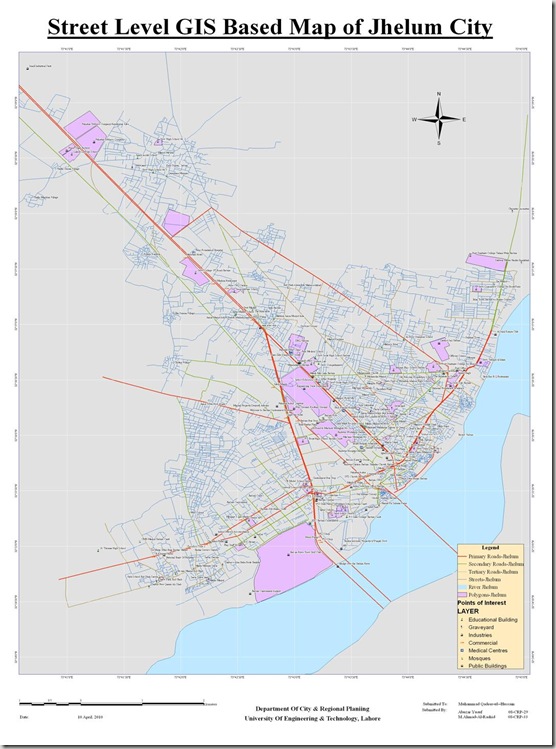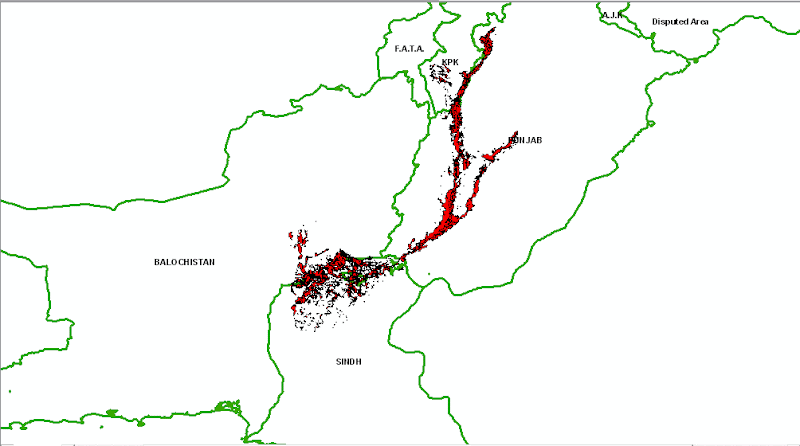helum (Urdu,Punjabi: جہلم) is a city on the right bank of the Jhelum River, in the district of the same name in the north of Punjab province,Pakistan. Jhelum is a few miles upstream from the site of the Battle of the Hydaspes between the armies of Alexander the Great and RajaPorus. Jhelum is known for providing a large number of soldiers to the British and later to the Pakistan armed forces due to which it is also known as city of soldiersor land of martyrs and warriors. Read More>>
This map has been been prepared by Abuzar Yousaf and Ahmad Al Rashid. They are Urban Planners from Department of City & Regional Planning, University of Engineering & Technology, Lahore.
Methodology Adopted:
Street level mapping has been completed using high resolution images (0.6-1m) of Google Earth dating June 22, 2009. Detailed process is mentioned in the tutorial HERE.
Contents:
- Data Layers:
- Primary Roads
- Secondary Roads
- Tertiary Roads/ Streets
- Water Bodies
- Railway Lines
- Points of Interest (Hospitals, Educational Buildings, Public Buildings, Mosques, Hotels, Banks, Petrol Pumps etc)
-
Area features (Parks, open spaces, Built up areas, Graveyards, Housing Schemes, water bodies etc)
2. Coverage:
- 149.61 Square Kilometer
Availability:
Data is available in KML and ESRI Shape file formats.












